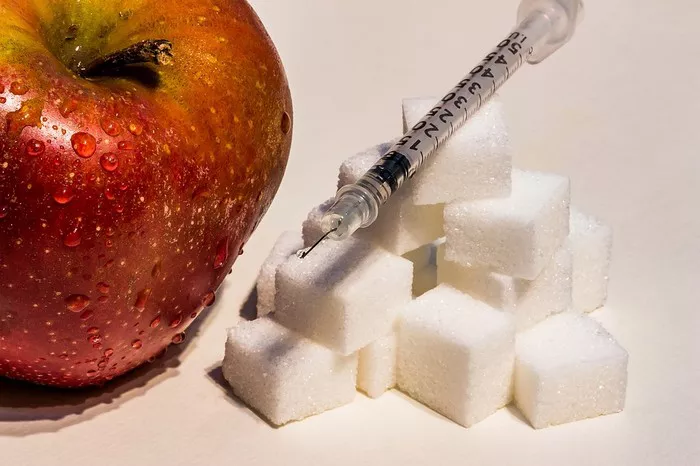Diabetes management heavily relies on a well-rounded diet rich in fruits and vegetables. These natural powerhouses not only offer essential nutrients but also play a crucial role in regulating blood sugar levels. For individuals with diabetes, choosing the right fruits and vegetables is paramount to maintaining stable blood glucose levels and overall health. In this article, we delve into the nutritional benefits, glycemic index, portion sizes, preparation methods, variety, recipes, and the role of these foods in managing diabetes effectively.
Nutritional Benefits
Fruits and vegetables provide an array of essential nutrients crucial for diabetic health. They are rich in fiber, vitamins, minerals, and antioxidants, which contribute to overall well-being and help manage blood sugar levels.
Fiber: Fiber is a key component in the diet of individuals with diabetes as it slows down the absorption of sugar and helps prevent spikes in blood glucose levels. Fruits and vegetables are excellent sources of both soluble and insoluble fiber. Soluble fiber found in foods like apples, citrus fruits, and Brussels sprouts forms a gel-like substance in the digestive tract, slowing down the digestion and absorption of carbohydrates. Insoluble fiber, abundant in vegetables like broccoli, cauliflower, and dark leafy greens, adds bulk to stool and aids in digestion, preventing constipation—a common issue among diabetics.
Vitamins and Minerals: Fruits and vegetables are packed with essential vitamins and minerals such as vitamin C, vitamin A, potassium, and magnesium. These nutrients play crucial roles in various bodily functions, including immune function, bone health, and nerve function, all of which can be affected by diabetes. For instance, potassium-rich foods like spinach, bananas, and sweet potatoes help regulate blood pressure, reducing the risk of cardiovascular complications associated with diabetes.
Antioxidants: Antioxidants, found abundantly in fruits and vegetables, help combat oxidative stress and inflammation, which are elevated in individuals with diabetes. Foods like berries, kale, and bell peppers are particularly rich in antioxidants such as vitamin C, flavonoids, and carotenoids, which may help reduce the risk of complications associated with diabetes, including heart disease and nerve damage.
Glycemic Index
The glycemic index (GI) measures how quickly carbohydrates in foods raise blood sugar levels. Foods with a high GI are rapidly digested and cause sharp spikes in blood glucose levels, while those with a low GI are digested more slowly, resulting in a gradual increase in blood sugar levels. For individuals with diabetes, choosing foods with a low to moderate GI can help maintain stable blood sugar levels.
Low GI Fruits: Many fruits have a low to moderate GI, making them suitable choices for diabetics. Berries such as strawberries, blueberries, and raspberries have a GI below 40, making them excellent options for managing blood sugar levels. Other low GI fruits include apples, pears, oranges, and grapefruit. These fruits are not only low in sugar but also high in fiber and antioxidants, making them ideal for diabetic health.
Low GI Vegetables: Non-starchy vegetables are generally low in carbohydrates and have a minimal impact on blood sugar levels. Leafy greens like spinach, kale, and Swiss chard have a negligible GI and are rich in fiber, vitamins, and minerals. Cruciferous vegetables such as broccoli, cauliflower, and Brussels sprouts also have a low GI and are packed with nutrients beneficial for diabetic health. Additionally, tomatoes, cucumbers, peppers, and mushrooms are excellent choices for diabetics due to their low carbohydrate content and low GI.
Portion Sizes
While fruits and vegetables are nutritious choices for diabetics, portion control is essential to managing blood sugar levels effectively. Consuming excessive amounts of even low GI fruits and vegetables can lead to spikes in blood glucose levels. Therefore, it’s important to be mindful of portion sizes when incorporating these foods into meals and snacks.
Recommended Portion Sizes: A general guideline for portion sizes of fruits and vegetables for individuals with diabetes is to aim for about 1 to 2 servings of fruit per meal and 2 to 3 servings of non-starchy vegetables. One serving of fruit is typically equivalent to one small piece of fresh fruit or half a cup of chopped fruit. For non-starchy vegetables, one serving is approximately one cup of raw leafy greens or half a cup of cooked vegetables. It’s important to spread out fruit consumption throughout the day and pair it with protein or healthy fats to minimize its impact on blood sugar levels.
Balanced Meals: Incorporating fruits and vegetables into balanced meals can help stabilize blood sugar levels and provide sustained energy throughout the day. Pairing fruits with sources of protein and healthy fats, such as Greek yogurt, nuts, or seeds, can further slow down the digestion and absorption of carbohydrates, preventing spikes in blood glucose levels. Similarly, including non-starchy vegetables in meals adds volume and nutrients without significantly impacting blood sugar levels.
Preparation Methods
The way fruits and vegetables are prepared can affect their nutritional value and glycemic index. Certain cooking methods, such as boiling and steaming, may cause a slight increase in the GI of some vegetables, while others, like roasting and grilling, can enhance their flavor and texture without significantly impacting their GI.
Cooking Methods: When cooking vegetables, steaming, sautéing, and roasting are preferable to boiling, as they help retain more nutrients and flavor. Steaming vegetables preserves their texture and minimizes nutrient loss, making it an excellent option for preserving the nutritional content of vegetables. Sautéing vegetables in a small amount of healthy fat, such as olive oil or avocado oil, enhances their flavor and helps maintain their nutritional value. Roasting vegetables at a high temperature caramelizes their natural sugars, resulting in a deliciously crispy exterior while preserving their fiber and nutrients.
Preparation Tips: To maximize the nutritional benefits of fruits and vegetables, opt for fresh, whole foods whenever possible. Choose ripe, in-season produce for optimal flavor and nutrient content. When selecting canned or frozen fruits and vegetables, opt for varieties without added sugars or sauces to minimize added sugars and sodium. When cooking, avoid excessive use of oils, sauces, or dressings high in sugar and unhealthy fats, as they can negate the health benefits of fruits and vegetables.
Variety and Options
A diverse selection of fruits and vegetables ensures a well-balanced diet rich in essential nutrients and antioxidants. Including a variety of fruits and vegetables in different colors, textures, and flavors not only adds interest to meals but also provides a wide range of nutrients beneficial for diabetic health.
Seasonal Options: Seasonal fruits and vegetables offer freshness, flavor, and nutritional variety throughout the year. In the spring, incorporate seasonal produce such as asparagus, strawberries, and spinach into salads, stir-fries, and smoothies. During the summer months, enjoy a bounty of fresh berries, tomatoes, cucumbers, and zucchini in refreshing salads, salsas, and grilled dishes. In the fall, embrace the harvest season with hearty root vegetables like sweet potatoes, carrots, and squash, perfect for roasting, soups, and stews. Winter brings an abundance of citrus fruits, kale, Brussels sprouts, and winter squash, ideal for hearty soups, roasted vegetable medleys, and citrus-infused salads.
Local and Sustainable Choices: Supporting local farmers and choosing sustainably grown fruits and vegetables not only benefits the environment but also ensures the freshest, most nutritious produce. Visit farmers’ markets or join a community-supported agriculture (CSA) program to access locally grown, seasonal fruits and vegetables. By incorporating locally sourced produce into your diet, you can enjoy the freshest flavors while supporting local agriculture and reducing your carbon footprint.
Recipes and Meal Ideas
Incorporating fruits and vegetables into delicious, diabetic-friendly recipes can make healthy eating enjoyable and satisfying. From vibrant salads and hearty soups to flavorful stir-fries and refreshing smoothies, there are countless ways to incorporate fruits and vegetables into every meal of the day.
Breakfast: Start your day on a nutritious note with a refreshing fruit smoothie made with spinach, kale, frozen berries, Greek yogurt, and a splash of almond milk. For a savory option, whip up a veggie-packed omelet with bell peppers, onions, mushrooms, and tomatoes, served with a side of sliced avocado and whole grain toast.
Lunch: Enjoy a colorful salad with mixed greens, cherry tomatoes, cucumber slices, shredded carrots, and grilled chicken or tofu, topped with a homemade vinaigrette made with olive oil, balsamic vinegar, and Dijon mustard. For a satisfying lunch on the go, wrap up your favorite veggies, hummus, and grilled chicken in a whole wheat tortilla for a nutritious and portable meal.
Dinner: Create a hearty vegetable stir-fry with broccoli, bell peppers, snap peas, and tofu or shrimp, seasoned with garlic, ginger, and low-sodium soy sauce, served over brown rice or quinoa. Alternatively, roast a medley of seasonal vegetables such as sweet potatoes, Brussels sprouts, and cauliflower with a drizzle of olive oil and a sprinkle of herbs for a simple yet flavorful side dish.
Snacks: Keep hunger at bay with healthy snacks like sliced apples with almond butter, carrot sticks with hummus, or celery sticks with peanut butter. For a sweet treat, enjoy a small serving of mixed berries topped with Greek yogurt and a sprinkle of cinnamon.
Health Management
Incorporating a variety of fruits and vegetables into a well-balanced diet is essential for effective diabetes management and overall health. These nutrient-rich foods provide vital vitamins, minerals, fiber, and antioxidants that support optimal blood sugar control, heart health, and immune function. By choosing low GI fruits and non-starchy vegetables, practicing portion control, and exploring diverse cooking methods and recipes, individuals with diabetes can enjoy delicious and nutritious meals while effectively managing their condition.
Conclusion
In conclusion, fruits and vegetables are invaluable allies in the management of diabetes. By understanding their nutritional benefits, glycemic index, portion sizes, preparation methods, variety, and incorporating them into meals and snacks, individuals with diabetes can take proactive steps towards better health and well-being. Embracing a colorful and diverse array of fruits and vegetables not only enhances the flavor and enjoyment of meals but also provides essential nutrients that support optimal diabetes management and overall vitality.
Related Topics
























